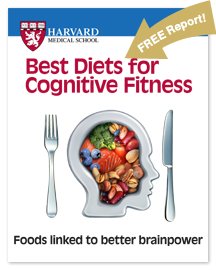Recent Blog Articles

Why play? Early games build bonds and brain

Moving from couch to 5K

How — and why — to fit more fiber and fermented food into your meals

Tick season is expanding: Protect yourself against Lyme disease

What? Another medical form to fill out?

How do trees and green spaces enhance our health?

A muscle-building obsession in boys: What to know and do

Harvard Health Ad Watch: New drug, old song, clever tagline

Concussion in children: What to know and do

What color is your tongue? What's healthy, what's not?
Osteoporosis
Osteoporosis is a disorder in which bones become thinner and lose their strength. Individuals with osteoporosis are at higher risk for breaking bones. The most common osteoporosis-related fractures occur in the wrist, hip and spine.
Hip fractures can be difficult to heal. They reduce the person's ability to move around. This can lead to complications and other health problems, and often contribute to premature death.
Osteoporosis is more common in women than in men, largely because of hormonal changes that occur during menopause. Most people with osteoporosis don't know they have it until they have a bone density test or break a bone.
Diagnosing osteoporosis
Sometimes osteoporosis is diagnosed during a regular physical exam when you turn out to have lost some height. This happens because silent fractures of the spine cause it to compress or curve. To verify a diagnosis, an x-ray may be taken to see if your bones are less dense than they had been.
The best way to diagnose osteoporosis (or its precursor, osteopenia) is with a bone density test. The main way to measure bone density is with dual-energy X-ray absorptiometry (DEXA). This test takes 10 to 15 minutes and is painless. It uses minimal amounts of radiation and generally is done on the spine and hip.
Blood and urine tests may be recommended to identify a cause of osteoporosis, such as a thyroid problem. For most people, however, there is no clear cause of osteoporosis other than aging.
Treating osteoporosis
Osteoporosis can be treated several ways. If it is mild, daily weight-bearing exercise can help build bone mass. Getting more calcium from food, and possibly getting calcium and vitamin D from supplements, can also build bone or at least prevent more bone loss. A number of medications have also been developed to slow bone loss and build bone. Although bone mass usually does not return to normal after treatment, the risk of fracture may decrease dramatically.
Preventing osteoporosis
Preventing osteoporosis is far better than trying to treat it. You can help prevent osteoporosis by
- eating foods rich in calcium, such as low fat dairy products, sardines, salmon, green leafy vegetables and calcium-fortified foods and beverages.
- getting more vitamin D from the sun or a supplement
- doing weight-bearing exercise like brisk walking every day
- not smoking
- not drinking too much alcohol
The outlook for people with osteoporosis is good, especially if the problem is detected and treated early. Bone density, even in severe osteoporosis, generally can be stabilized or improved. The risk of fractures can be substantially reduced with treatment.
Recent Blog Articles

Why play? Early games build bonds and brain

Moving from couch to 5K

How — and why — to fit more fiber and fermented food into your meals

Tick season is expanding: Protect yourself against Lyme disease

What? Another medical form to fill out?

How do trees and green spaces enhance our health?

A muscle-building obsession in boys: What to know and do

Harvard Health Ad Watch: New drug, old song, clever tagline

Concussion in children: What to know and do

What color is your tongue? What's healthy, what's not?
Free Healthbeat Signup
Get the latest in health news delivered to your inbox!
Sign Up

